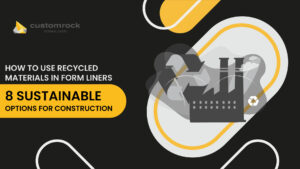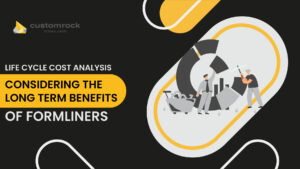TL; DR
3D printing is increasingly being used to create formliners for architecture and construction, allowing for greater precision and customization. This technology can also reduce production time and labor. Formliners can also be made more sustainable by using recycled materials and biodegradable options.

3D formliner printing
One of the most exciting developments in the world of formliners is the increasing use of 3D printing technology. By using 3D printing to create formliners, architects and builders can achieve an unprecedented level of precision and detail in their designs. This allows for the creation of truly unique and complex architectural forms that would have been impossible to achieve using traditional methods.
3D printing technology has the potential to revolutionize the world of architectural formliners. By using 3D printing to create formliners, architects and builders can achieve an unprecedented level of precision and detail in their designs. This allows for the creation of truly unique and complex architectural forms that would have been impossible to achieve using traditional methods.
One of the key benefits of using 3D printing to create formliners is the ability to produce highly customized designs. With traditional formliners, architects and builders are limited to a relatively small number of pre-made patterns and textures. However, with 3D printing, it is possible to create formliners with virtually any design or pattern that can be imagined. This allows architects and builders to create truly unique and original architectural forms that reflect their own personal vision and style.
In addition to the ability to create highly customized formliners, 3D printing also offers significant advantages in terms of speed and efficiency. Traditional formliner production methods can be time-consuming and labor-intensive, but with 3D printing, formliners can be produced quickly and easily, allowing for faster project completion times.
Overall, the use of 3D printing in the production of architectural formliners represents a major advancement in the field. By enabling the creation of unique and complex architectural forms, and offering significant benefits in terms of speed and efficiency, 3D printing is likely to play an increasingly important role in the future of formliners.
Construction and Formliner Sustainability
Another area of innovation in the field of formliners is the use of advanced materials. In the past, formliners were typically made from materials such as wood or plastic, but new developments in materials science are now making it possible to create formliners from a wide range of materials. These materials are not only more durable and long-lasting than traditional formliners, but they also allow for the creation of new and exciting textures and patterns.
There are a number of ways in which architectural formliners can be made more sustainable. One of the most effective ways to make formliners more sustainable is to use materials that are recycled or repurposed. This can include using recycled plastics or reclaimed wood to create formliners, which helps to reduce waste and conserve natural resources.
In addition to using recycled materials, formliners can also be made more sustainable by using materials that are biodegradable or easily recyclable. This can include using natural materials such as bamboo or cork, which are both highly sustainable and can be easily disposed of without harming the environment.
Another way to make formliners more sustainable is to use materials that are durable and long-lasting. This can help to reduce the need for frequent replacements, which can save resources and reduce waste.
Overall, there are many ways in which architectural formliners can be made more sustainable, from using recycled and biodegradable materials to choosing durable and long-lasting options. By taking a more environmentally conscious approach to formliner production, sustainable architects and builders can help to reduce their impact on the environment and promote sustainable construction practices.
The future of architectural formliners looks bright, with many exciting innovations and advancements on the horizon. As more and more architects and builders recognize the potential of formliners, the demand for these versatile tools is likely to continue to grow.







